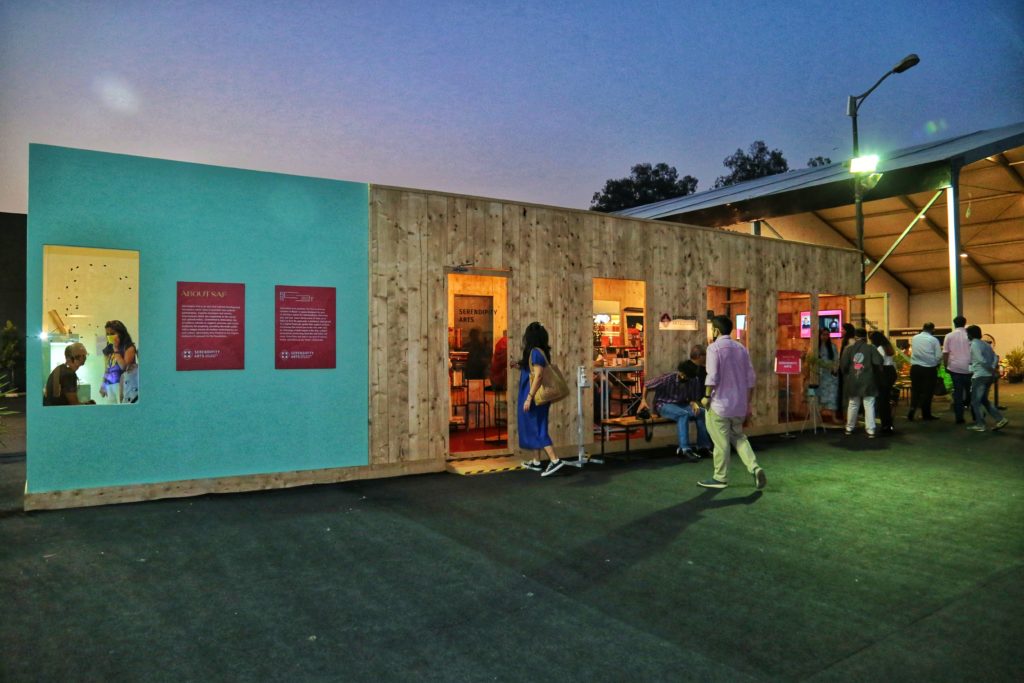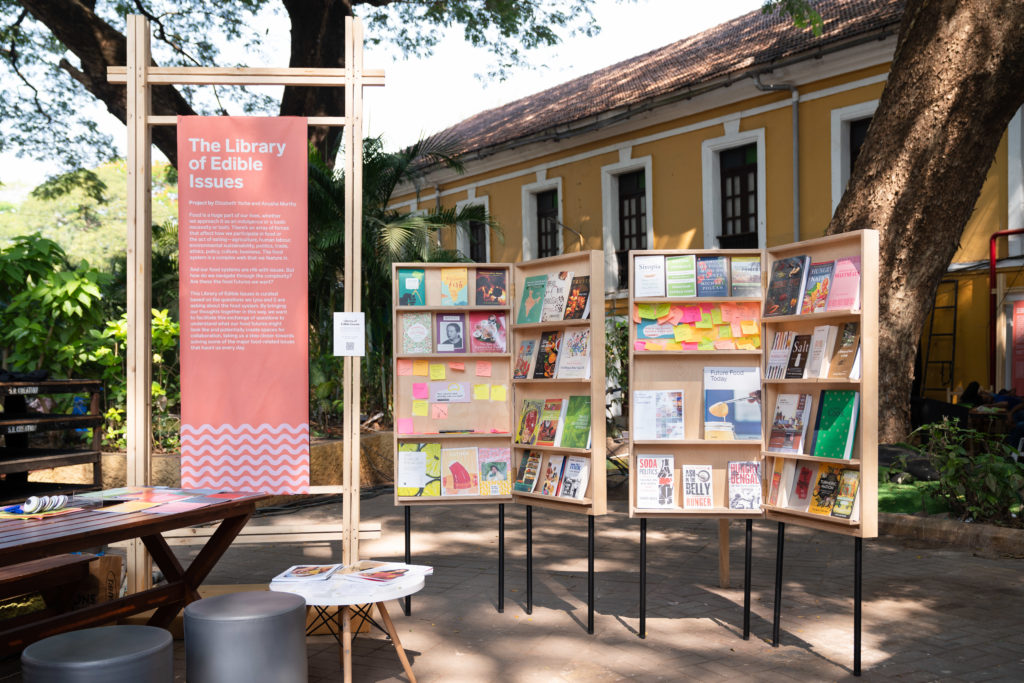India Art Fair 2023

Projects
FOOD LAB
the cases of missing vegetables
Project by Akash Muralidharan
COOK AND SEE
The concept for the ‘Cook and See’ challenge arose from the desire to find out why several vegetables from Samaithu Paar (A Tamil vegetarian cookbook from the 1950s) are not present in our kitchens anymore. Why have some of these vegetables fallen off our plate?
The idea was to cook with underused vegetables using traditional recipes suggested in the book to try and get to the bottom of this mystery. We started off with the vegetables mentioned in the book and hoped to discover more as we progressed through the 100 days. So every day we posted a picture of the vegetable on Instagram, a video of my mother cooking a recipe from the book and some information about the history and usage of the vegetables. This helped us learn more about the vegetables, in terms of their culinary potential, the journey they took to reach us in South India and their accessibility in today’s world.
After the 100 days, we were able to locate about 70 vegetables and recipes to incorporate. Along with these, we were also able to generate some insights to help us talk to the stakeholders of our food system to further understand the production and consumption of these vegetables. Right now, we are talking to home cooks, chefs, restaurants, farmers, and a few other stakeholders in the city to develop further insights and to verify if the assumptions we began with are true.
The challenge remains to unearth the reason or reasons behind the absence of these and in the process, to devise methodologies to make sure we do not miss out on any more in the future. Collating the research findings and answers as a book or an online repository accessible by the public can help us all understand the fact that the food on our plate is much bigger than what it is and situated in a wider nexus. That is where the challenge is headed towards.
About Akash
I am Akash Muralidharan. I am a food designer from Chennai. I am keen on
understanding the impact of food on culture. I aim to explore Food, Architecture
and its cultural background as a creative process and come up with innovative
solutions for future scenarios. Along with two dear friends Sanjana a Textile
designer and Priyadarshini a Graphic designer we found “VIZHA” a
multidisciplinary design studio that strives to create and experiment with the 3
basic needs – Food, Clothing, and Shelter.


The Library of Edible Issues
Project by Elizabeth Yorke and Anusha Murthy
Food is a huge part of our lives, whether we approach it as an indulgence or a basic necessity or both. There’s an array of forces that affect how we participate in food or the act of eating — agriculture, human labour, environmental sustainability, politics, trade, ethics, policy, culture, business. The food system is a complex web that we feature in.
And our food systems are rife with issues. But how do we navigate through the complexity? Are these the food futures we want?
This Library of Edible Issues is curated based on the questions we (you and I) are asking about the food system. By bringing our thoughts together in this way, we want to facilitate this exchange of questions to understand what our food futures might look like and potentially create spaces for collaboration, taking us a step closer towards solving some of the major food-related issues that haunt us every day.
About Anusha Murthy
With a background as an engineer, Anusha has worked in growing tech startups and strengthening the startup ecosystem in her city. She specializes in technology adoption to improve the food system.
About Elizabeth Yorke
Elizabeth is a chef turned food researcher, writer and an advocate for sustainable food systems.
She is the co-founder of Edible Issues, a collective that is fostering thought and conversation on the Indian Food System, and the founder of Saving Grains, an upcycling food initiative inspired by the historically circular relationship between brewers and bakers.

In Praise of Shadows
Project by Julien Segard
The art of Julien Segard begins, rests and thrives between two ends of the spectrum. It is a dialogue between the visceral and the peripheral, vacuity and mass, the potholes and the stars, purity and corruption, the distinct and the intangible, the organic and the man-made. He dives head-first into the milieu, which is his prime source of artistic inspiration, forming a narrative of experiences that explore the relationship between man, landscape and architecture.
In Praise of Shadows is a two-channel video installation that has been shot entirely at night over a period of 3 months across Panaji, Old Goa and Mapusa. The narrative, emerging out of nights spent roaming on the edges of a territory, examines the legacies of power, religion, violence, and resilience through the relics of ancient and modern history, probing the logic that encapsulates time.
Two large projections extend on two walls to build an immersive experience mixing sound samples and images. The alternation of irradiant screens and sudden darkness, stark sounds and heavy silence, breaks the narrative into fragments where the glimpse of a broken world of ruins (abandoned objects, skeletons of collapsed billboards, vacant spaces) coexists with recently built infrastructure like an omen of the latter’s fate. Raw footage, an unwoven succession of images, evoking a constant tension and traces of the imperceptible. A bath of blaze and darkness.
When the river sleeps, the reflection is brought from the surface of the water to the underground, where traces of human activity are engraved on the walls, on the pillars, in the dust. The foundations of the modern world seem to link the archaic to the present time, yielding an archaeology of the present.
Time is a loop, a circle with no beginning and no end.
‘In Praise of Shadows’ was exhibited for the first time on the riverfront promenade in Panjim during the 2022 edition of Serendipity Arts Festival. Two large projections extended on two screens to build an immersive experience.
About Julien Segard
Julien Segard’s work explores the frictions embedded within urban structures, the free-flowing contours of nature’s invasion into such structures, and the shared intimacies of the cityscape that allow each of us to claim others’ spaces as our own. His practice reveals glaring blind spots in our vision(s) of urban space, building a thread of connections through paintings and works on paper. Much like portraits of a city, the slivers of roads, underpasses, and flyovers that populate Julien’s work testify to the possibility of a life lived in the wastelands of a megacity.

Two–channel video, 13 min 46 sec
Editing: Tanmay Kulkarni
Sound: Hemant Sree Kumar, National Animal
Camera: Julien Segard, Siddharth Moulik
Drone Footage: Akash Madhukar Fulari
Assistant: Divyesh Undaviya
Special thanks to Kapil Das, Tenzing Dakpa and Asim Waqif
This project is part of “The Island That Never Gets Flooded”, a Public Art Grant awarded by Serendipity Arts Foundation to 6 Goa based artists who showcased their work at Serendipity Arts Festival, which took place in Panjim, Goa between 15-23 December 2022.

